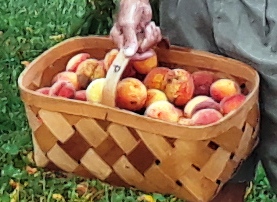Peach Is Terrible To Waste: Wasting Fruit Lesson
In my world, wasting fruit seems to be a travesty of the highest order. I can’t seem to throw anything out. Even if it’s molding or rotting, I’ll yank it from the fridge, scrape the mold or rot off, throw it in the blender, and make a smoothie out of it. I might cut it with some old kale or spinach or some mint from my garden, but I’ll be darned if I’m going to let it go to waste!
As you know, I got a lot of free peaches from friends of ours, and I learned a fantastic way to skin them, to get the maximum amount of fruit possible. I learned a lot of lessons from picking peaches. Unfortunately, there was one final lesson I needed to learn.
Rotting Peach Lesson Learned
You see, I figured — since many of the peaches were still green — I could just put them in a big silver bowl, place the bowl near the kitchen window where the morning Georgia sun would hit it. Eventually, I figured, they’d ripen up and be ready for blanching, peeling and cooking.
Peach Surprise!
 Late last night I was in the kitchen and happened to notice a bunch of fruit flies humming around. Turning my attention to the peach bowl, I discovered many of the previously-green fruits, which had only a small bruise on them, were now nearly completely rotted. Me, who was so careful, was now guilty of that cardinal sin I detest: Wasting fruit.
Late last night I was in the kitchen and happened to notice a bunch of fruit flies humming around. Turning my attention to the peach bowl, I discovered many of the previously-green fruits, which had only a small bruise on them, were now nearly completely rotted. Me, who was so careful, was now guilty of that cardinal sin I detest: Wasting fruit.
This morning, it was even worse than I expected. I was only able to save about one-third of my harvest. And if you know how much I like peaches, you’ll realize how bad I feel for wasting fruit. How rotten are the peaches?
Lesson Learned in Wasting Fruit
What is my big aha lesson learned? Simple: If you don’t want to be guilty of wasting fruit, get to it right away. Even if you think it might be a little green, if you’re going to try to ripen it, check it every few hours. Seriously! Especially soft fruits like peaches, plums and apricots. They can turn bruised, over-ripe or moldy almost as you’re watching them.


